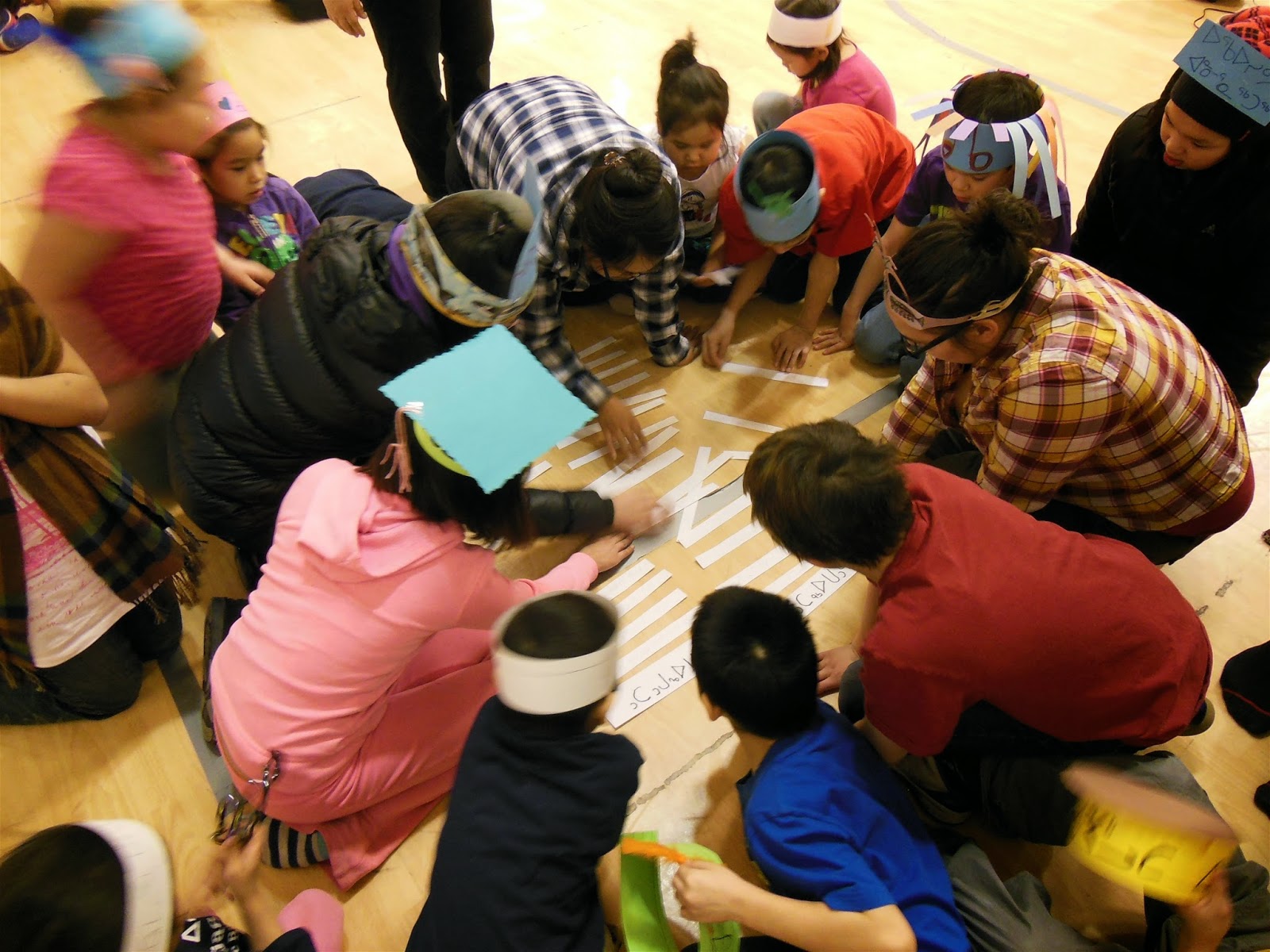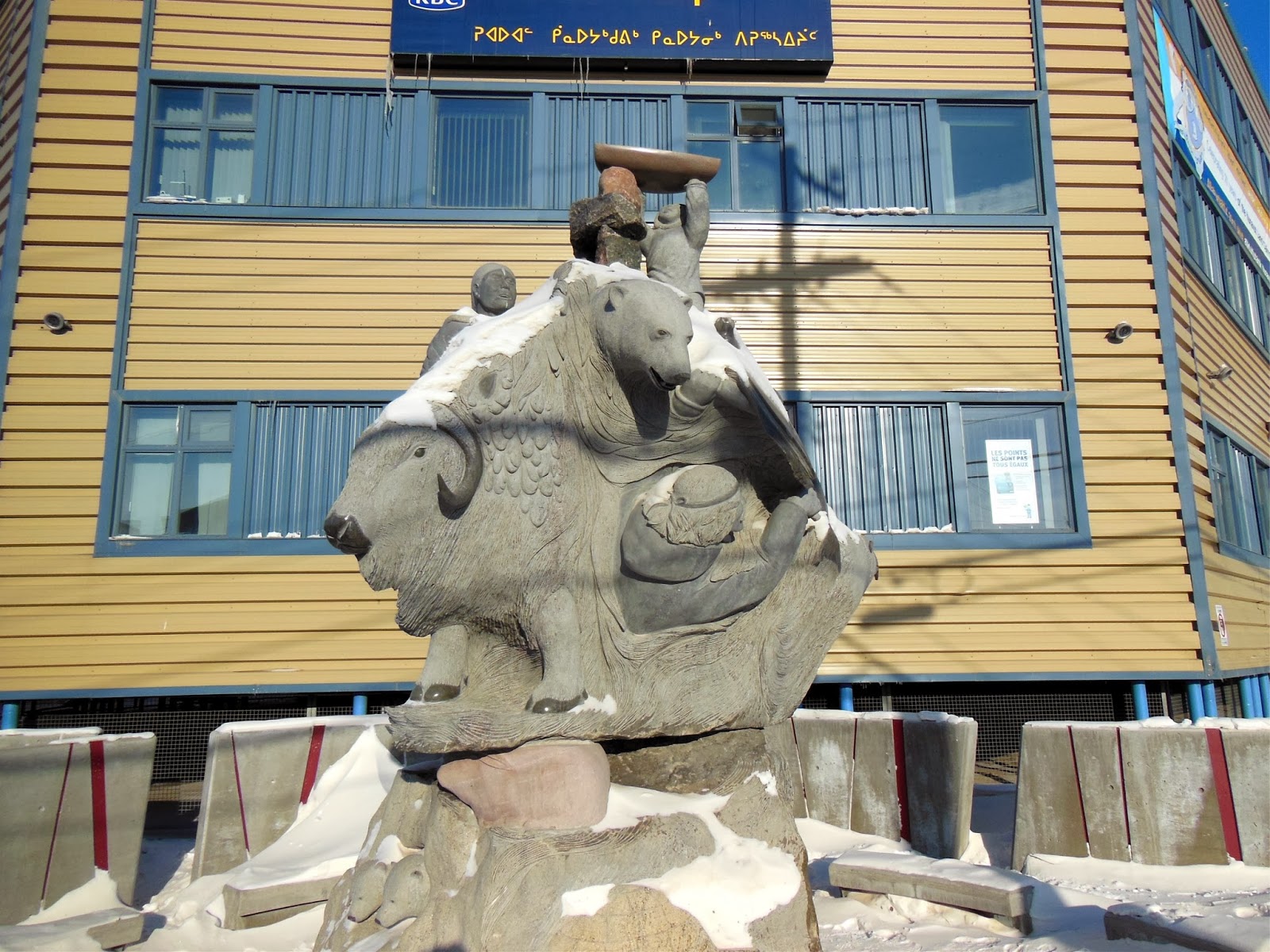The
month of February was dominated by media coverage of the 2014 Sochi Winter Olympics
(Feb 6 - 23). Since Canadians thrive on
winter, it's only natural to assume that we were all glued to our TVs,
computers, tablets, smartphones, newspapers, and magazines, eagerly watching
and keeping up to date with the progress of our athletes. Personally, I relied on the Internet and word
of mouth.
Sochi
is located in southern Russia and is the first Russian city to host the
Olympics after the collapse of the Soviet Union in 1991. Despite a variety of controversies, (ie.
bloated budget, corruption, treatment of LGBT athletes/tourists, incomplete
venues, side-by-side toilets with no dividers), the Games were a success and Team Canada came home with 25 medals: 10 gold,
10 silver, and 5 bronze. And of course,
Canada still reigns supreme in hockey (Men's & Women's). Bring on PyeongChang in 2018!
With
the arrival of March, anticipation for an upcoming circumpolar sports event was growing
across the Arctic. The Arctic Winter Games is "a high profile circumpolar sports competition for northern and
arctic athletes. [They] provide an
opportunity to strengthen sport development[,] promote benefits of sport, to
build partnerships, and promote culture and values." In short, they are the Olympics of the North.
The Games were founded in 1969 to give circumpolar athletes a venue to compete
"on their own turf and terms".
Beginning in 1970, the games have been held in Alaska, Canada, or
Greenland every two years. This year,
the games were held in Fairbanks, Alaska, from March 15 - 22. All nine contingents participated: Alaska
(USA), Greenland, Northern Alberta (Canada), Northwest Territories (Canada),
Nunavik (Quebec, Canada), Nunavut (Canada), Yukon (Canada), Sami people, and
Yamalo-Nenets (Russia). Arctic Bay sent
a team of six males and two chaperons to Fairbanks. The six young athletes competed under the
Team Nunavut banner. (More on their
progress and return in next week's post).
 |
| Full Moon. March 14, 2014. |
For
the teachers of Inuujaq School, the month of March signaled the end of the
first half of the semester, the issuing of midterm report cards, and
parent-teacher interviews. The first
week of March was devoted to reviewing and testing. My students had just four days to prepare for
their midterm tests at the end of the week.
I reviewed all the course materials with my English and Social Studies
students and gave them exercises to help them remember. They also had to complete and submit any
remaining class work to me before Friday, or else it wouldn't be included on
their midterm mark. My guitarists had a performance test that required them to select and play their favourite guitar
riffs from a long list of choices. I
spent the weekend of March 8 & 9 correcting papers, recording marks, and
writing comments. I felt great when
everything was completed.
Parent-Teacher
interviews occurred on Wednesday, March 12.
There were no afternoon classes that day. Unfortunately, I didn't meet the parents of
all my students, but I was glad that several did come to speak to me. I explained their child's report card, their
behaviour in class, and their strengths and weaknesses.
Friday,
March 14th was a very busy day. Administering
midterm tests was just one of the many events that took place. At the time, the Canadian Armed Forces and Rangers
were conducting a joint Arctic warfare exercise; the Rangers were teaching several southern
soldiers how to live, survive, and fight on the land. I witnessed them riding into town Thursday
evening - a convoy of black skidoos pulling long qamutiks. Apparently, they had flown in all their
equipment from Resolute. On Friday, the
Forces and Rangers visited the students of Inuujaq School and organized an
evening community feast at the Community Hall.
As
a way of "killing two seals with one harpoon", the soldiers and Rangers
visited the school during our afternoon Attendance Award Assembly. They were the Guests of Honour. The school holds this kind of assembly every
month to acknowledge the students who achieved perfect attendance for the
previous month. I know there are
arguments for and against rewarding perfect attendance, but in a community
where tardiness and absenteeism are a concern, any incentive to get students to
attend school is a good thing. After the
awards were handed out, the visiting soldiers introduced themselves one-by-one and
answered any questions the students had.
After
school, a number of teachers faced off against the junior boys basketball team. It was quite an epic game, going into triple
overtime. Find out what happens next week!
The
community feast was scheduled to begin at 6pm but things didn't get rolling
until 6:45. I was expecting a
traditional feast with a long tarp in the centre of the floor filled with
country food (ie. caribou, char, seal), but instead, rows of tables and chairs
had been set up. The southern soldiers
and Rangers were in the kitchen preparing Arctic Char and going through excess
boxes of Individual Meal Packages (IMPs), the food that soldiers eat in the field. All the excess IMPs were given away for free;
it was more cost effective than bringing them back to Resolute.
While
I waited for the feast to begin, I spoke with several of the participating
soldiers. I told them that I had been
involved in the cadet program for many years and was now a CIC officer. They congratulated me on being sworn in last
November and answered my questions about the winter exercise. Out on the land, the Armed Forces and
Canadian Rangers use the .303 Lee-Enfield No. 4 rifle because of its high reliability. They mostly use it against natural predators
instead of an enemy force. Granted, if
the Arctic was invaded, I'm sure the Rangers would use a more potent rifle.
The
feast began with an Inuktitut prayer, followed by a short speech from the
Sergeant in charge. He thanked everyone
for attending the feast and the town for welcoming and hosting the military
contingent. He presented a Plaque of
Appreciation to the mayor, Philip Kalluk.
With the formalities out of the way, it was time to eat. There was plenty of Arctic char to go around
and the piece I ate was delicious. These
soldiers knew how to cook. I had hoped
to get some raw char to take home but all the locals got to it first.
As
I was leaving the community hall, I took several pictures of my surroundings. Next to the building sat ten Arctic Cat
skidoos perfectly parked in a row and one long qamutiq loaded with red gas
canisters. Naturally, these belonged to
the military. In the distance, a full
moon shone brightly above King George V Mountain. And out on the ice, three Inuk boys were
playing ball.






























